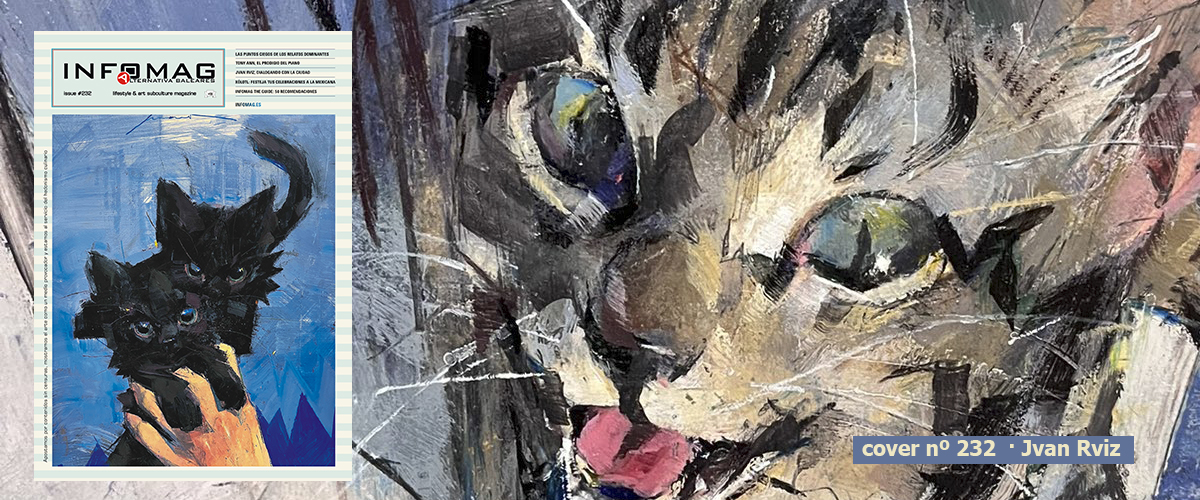Un viaje fotográfico por los límites de lo íntimo, lo performativo y lo absurdo.
Juno Calypso y la inquietante estética de lo artificial. Se inscribe en esa tradición de artistas que, desde una sensibilidad crítica, usan la imagen para desafiar los cánones normativos de representación, especialmente aquellos que atraviesan el cuerpo femenino y su construcción en el imaginario colectivo.
Su obra fotográfica, anclada en la performance autorreferencial y el autorretrato, subvierte desde el interior el aparato simbólico de la feminidad impuesta, cuestionando sus códigos con una ironía tan fina como desconcertante.
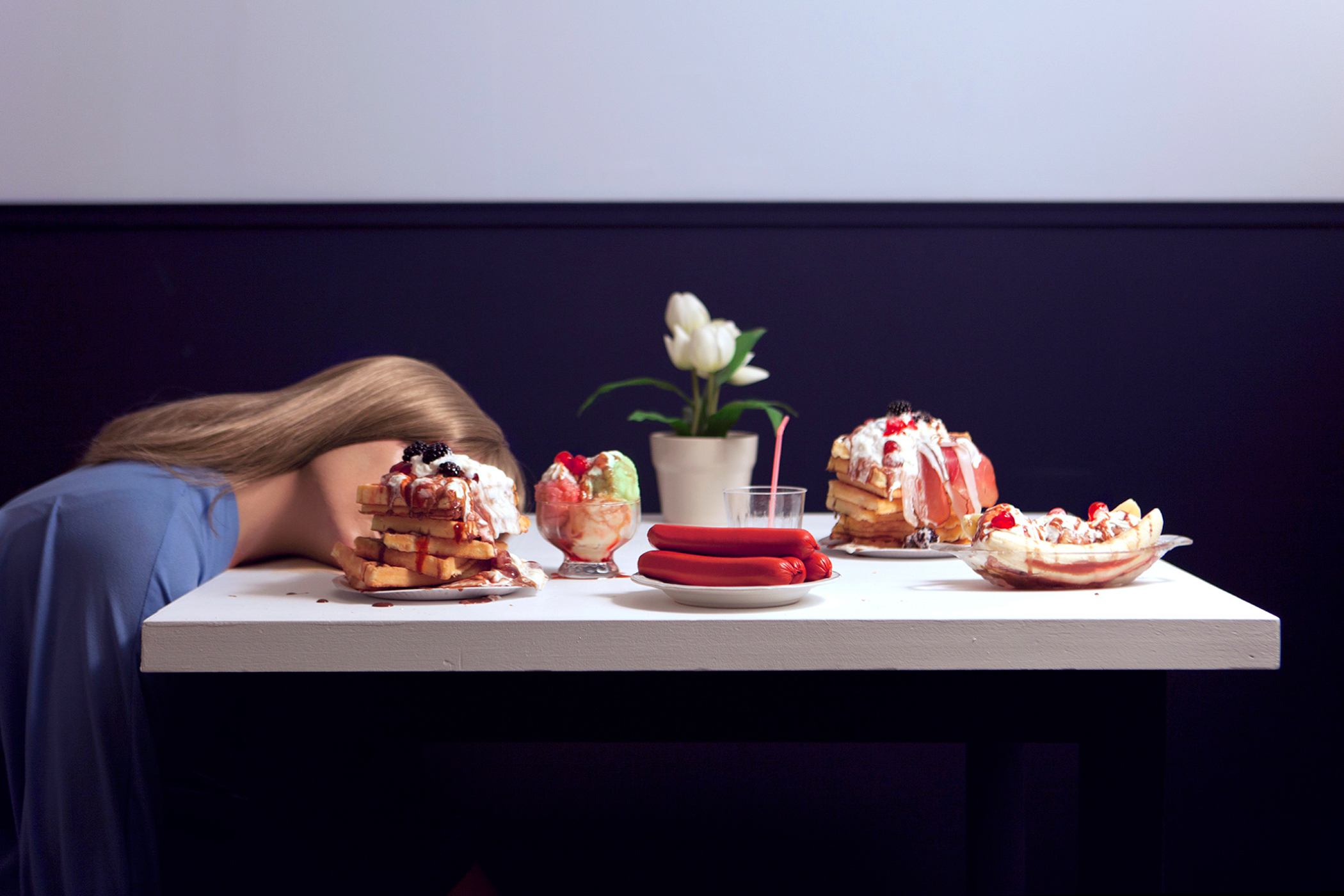
Resulta imposible aproximarse a su producción sin detenerse en el personaje de Joyce, alteridad performativa que la propia Juno encarna con meticulosa devoción. Joyce no es un simple alter ego, ni una extensión autobiográfica sin más.
En palabras de la artista, se trata de «un personaje de ficción sin historia», una entidad simbólica que opera como dispositivo conceptual. Su existencia responde a una necesidad: la de escindir el yo real de la proyección artística, permitiendo una exploración más libre —aunque profundamente personal— de los temas que subyacen en la obra de Calypso: la opresión de la feminidad, la violencia estética, la soledad, el absurdo y la belleza convertida en trampa.
![]()
Desde sus primeras series, Joyce I y Joyce II, el personaje aparece recubierto de un aura paródica: pelucas estridentes, gafas desproporcionadas, prótesis dentales. No obstante, esta caricatura inicial fue, con el tiempo, refinándose hacia una figura más inquietante y ambigua.
El espectador, desconcertado, ya no puede escudarse en el humor para eludir la incomodidad. Y es que ese tránsito del ridículo al extrañamiento es clave para comprender la evolución de Calypso como artista: su intención no es simplemente ridiculizar los arquetipos femeninos, sino evidenciar lo perturbador que resulta encarnarlos hasta las últimas consecuencias.
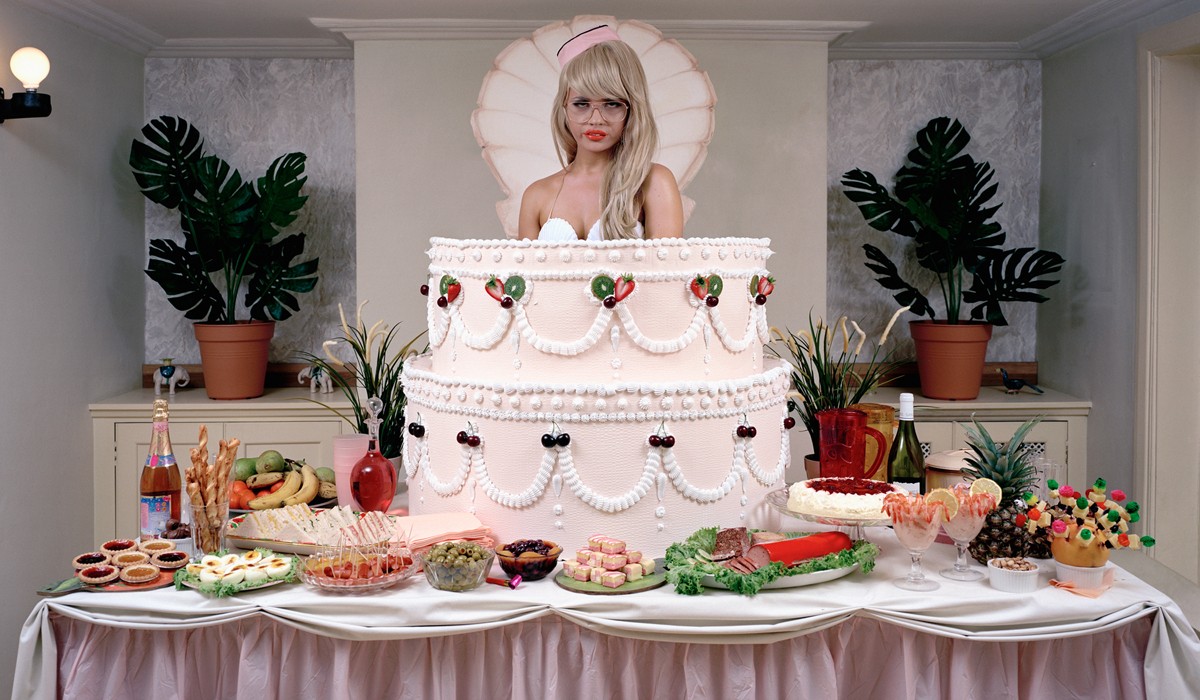
Juno Calypso y la inquietante estética de lo artificial. El drama silencioso de la mujer atrapada en sus propios reflejos.
En una época en que el selfie ha sido democratizado hasta el hartazgo, Juno Calypso subvierte su lógica más banal. En lugar del narcisismo fugaz, propone una introspección conceptual a través del autorretrato, con una estética cuidada hasta el delirio y una puesta en escena propia del cine más obsesivo.
Su aproximación al autorretrato es casi de orden metafísico: ¿quién puede representarte mejor que tú misma, si no tú misma convertida en otro? Esta operación, aparentemente simple, implica una ruptura radical con el paradigma fotográfico tradicional: la fotógrafa ya no está detrás de la lente, sino atrapada en el centro mismo de su propio dispositivo, protagonista y víctima de un espectáculo que ella misma ha orquestado.


La serie The Honeymoon Suite, una de las más logradas de su trayectoria, representa el cénit de esta exploración.
En ella, Calypso se recluye —literalmente— en una habitación de hotel en un decadente resort de Pennsylvania, lugar antaño consagrado al amor romántico y la promesa matrimonial. Allí, durante semanas, se dedica a escenificar escenas tan bellas como perturbadoras, en las que la figura de Joyce se multiplica en los espejos, se oculta tras mascarillas electrónicas, se recuesta con languidez entre electrodomésticos obsoletos y pelucas sin vida.
La estética pastel, reminiscente de los años 60 y 70, funciona como velo que suaviza —y a la vez exacerba— el absurdo latente en cada encuadre. Lo que a primera vista podría parecer un homenaje kitsch a una época glamorosa se revela, con una mirada más atenta, como una crítica feroz a la maquinaria de la feminidad.
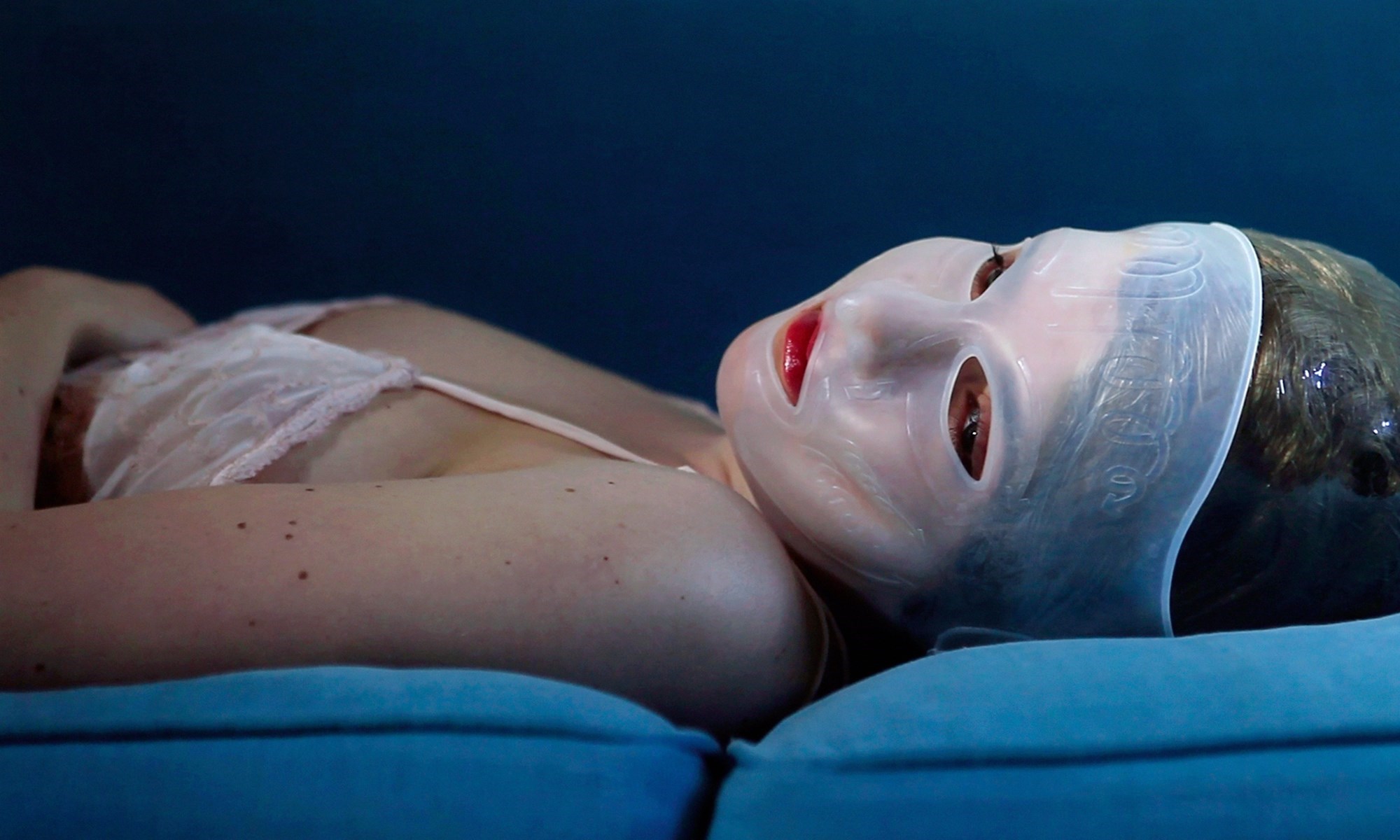
Porque en el universo simbólico de Juno Calypso, la mujer es presentada como una construcción artificial, atrapada en una escenografía que exige belleza, deseo, pasividad y sonrisa perpetua. El cuerpo femenino, más que ser sujeto de acción, es un artefacto decorativo que debe ser moldeado, alisado, perfumado y servido como manjar.
A través de cremas, lencería, electroestimulación, corsés o máscaras antiedad, Joyce encarna esa prisión estética que aún hoy —aunque con nuevos envoltorios— define los contornos de la feminidad hegemónica. Calypso no denuncia desde la rabia explícita, sino desde la incomodidad cuidadosamente coreografiada.
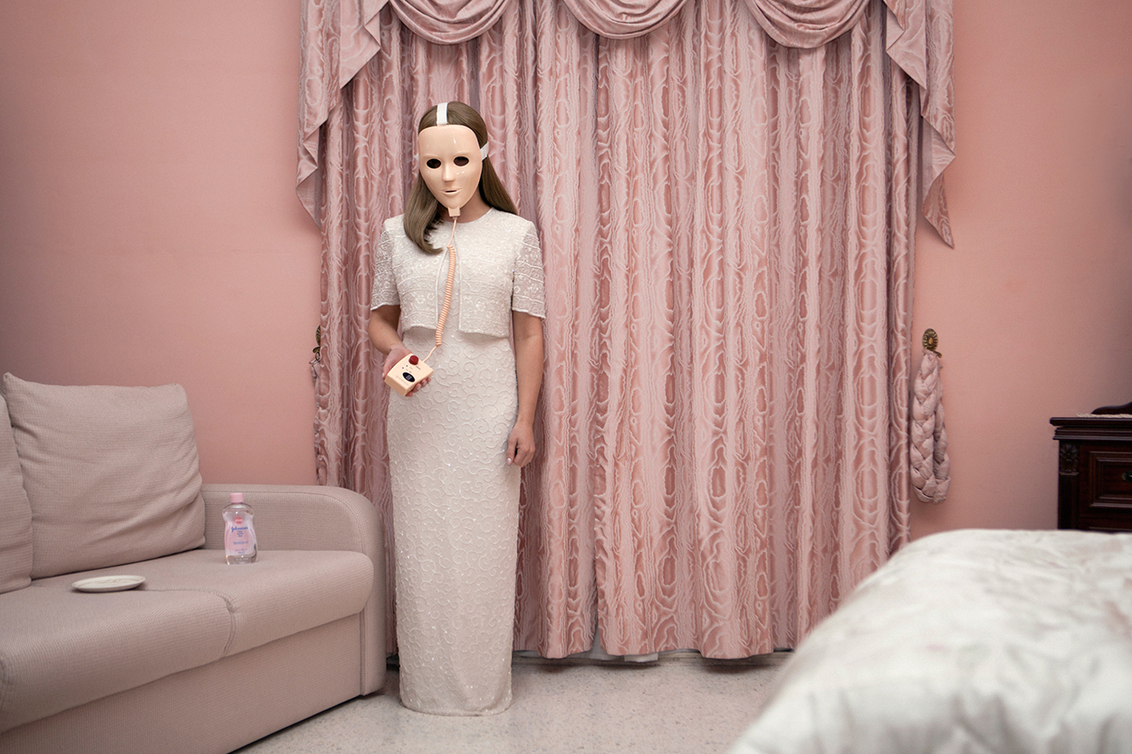
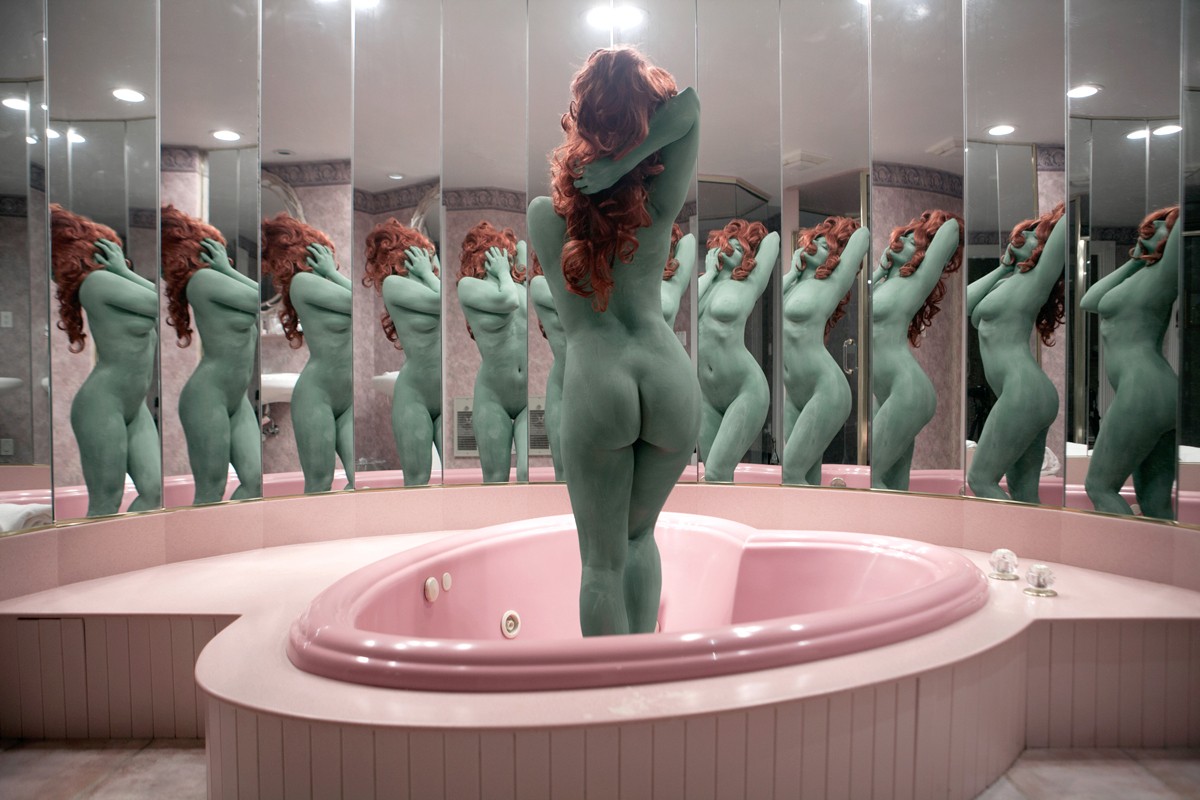
Una exploración de la feminidad encarnada en la imagen de Juno Calypso.
La soledad, por su parte, es otro eje central en su obra. Pero no se trata de una soledad romántica o contemplativa. Es una soledad estructural, casi ontológica, que se filtra por cada rincón de sus imágenes. Joyce está sola no porque haya sido abandonada, sino porque nunca hubo otro con quien compartir el escenario. La cámara es su único testigo, y el espectador, su cómplice silencioso.
En esta dinámica, lo íntimo y lo artificial se entrelazan de forma inquietante: lo que debería ser el ámbito de lo privado (el ritual de embellecerse, la espera del amado, la preparación del cuerpo) se convierte en una exposición escenificada, un espectáculo sin público más allá del ojo que observa desde fuera. Todo es decorado, todo es apariencia. Y sin embargo, todo duele.

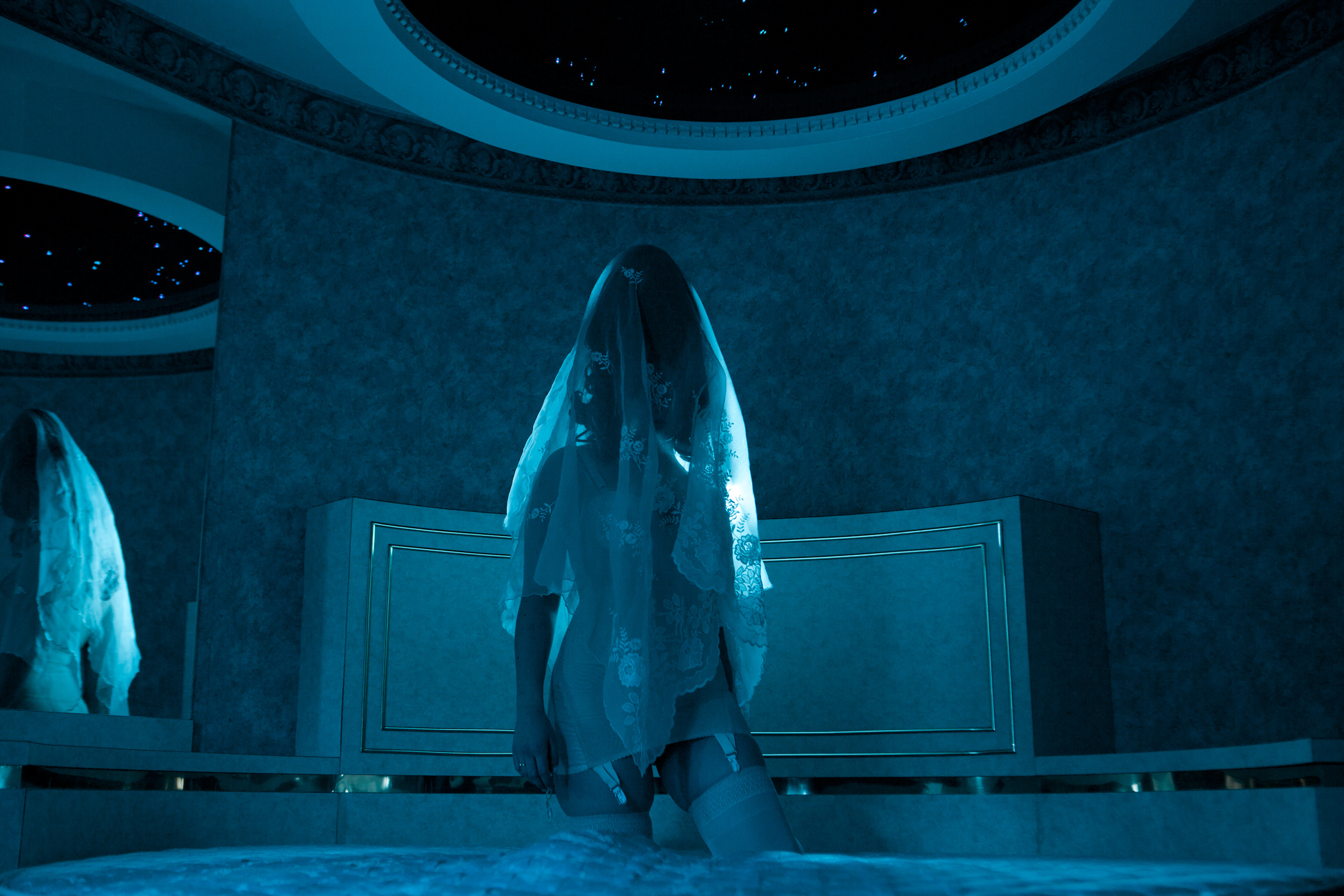
Uno de los aspectos más fascinantes del trabajo de Calypso es su devoción por el detalle. Cada imagen está pensada hasta el último milímetro. Ella misma reconoce que detesta la fase de preparación del set, pero encuentra gozo en el momento de encarnar al personaje, de probar posturas y microexpresiones.
Esa búsqueda obsesiva por la imagen perfecta no es solo técnica, sino filosófica. No hay espacio para la espontaneidad: cada foto es una pequeña tragedia cuidadosamente controlada, una representación en la que el artificio no disimula, sino que revela.
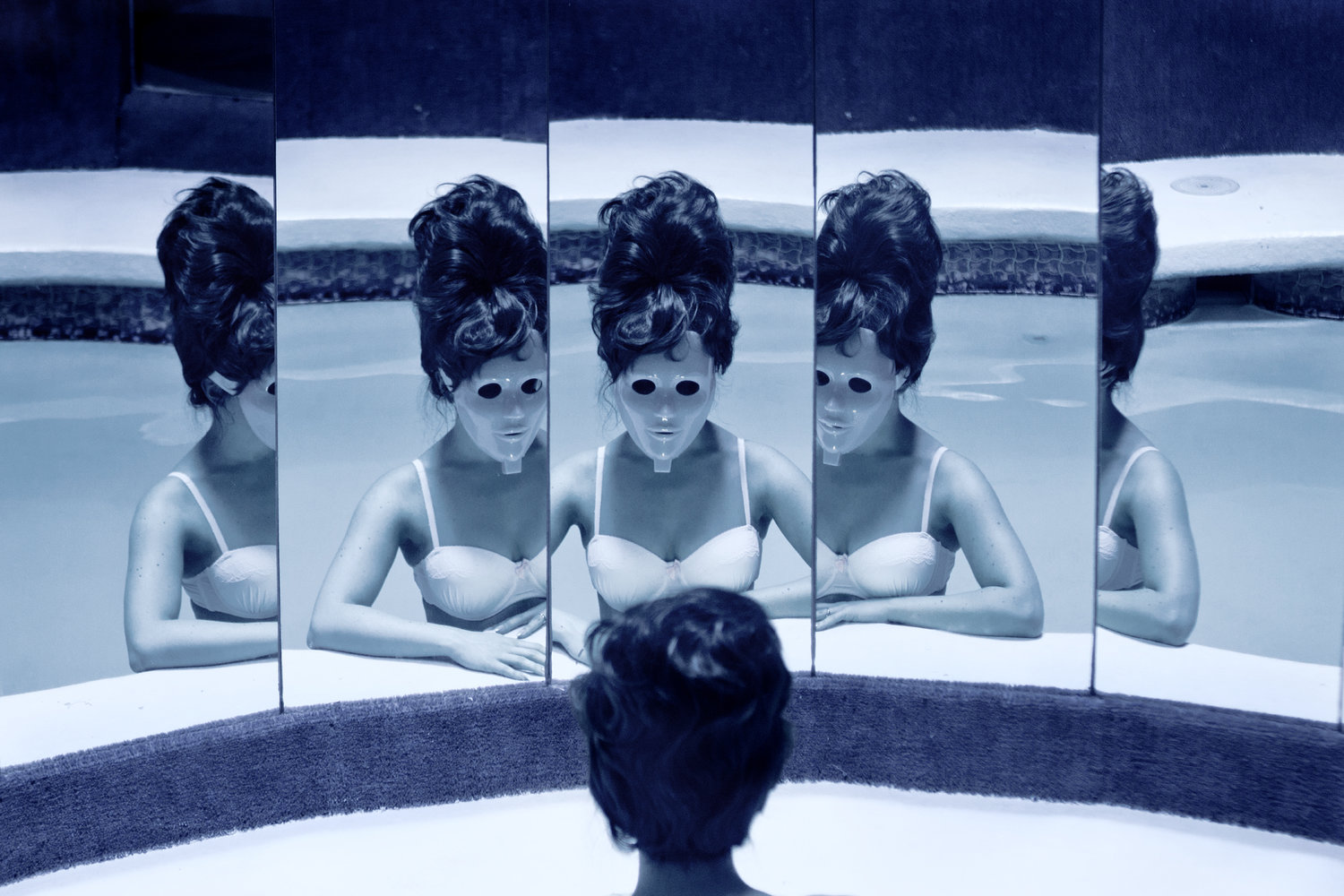
La obra de Juno Calypso, en definitiva, se instala en la frontera difusa entre la crítica y la fascinación, entre el humor y el desconcierto, entre la belleza y el horror.
Nos obliga a mirar lo que muchas veces preferimos ignorar: la carga que implica ser mujer en una cultura que exige performar constantemente una identidad que rara vez coincide con el ser. En este sentido, su propuesta no solo es estética, sino política, ética, existencial.
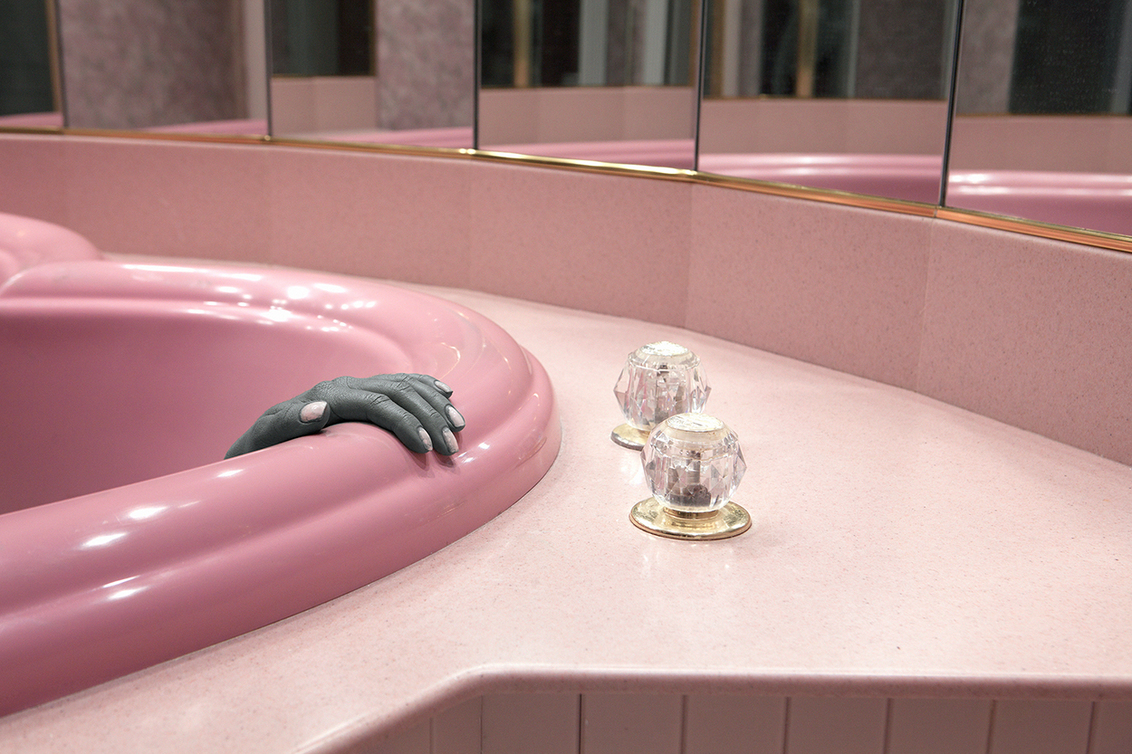
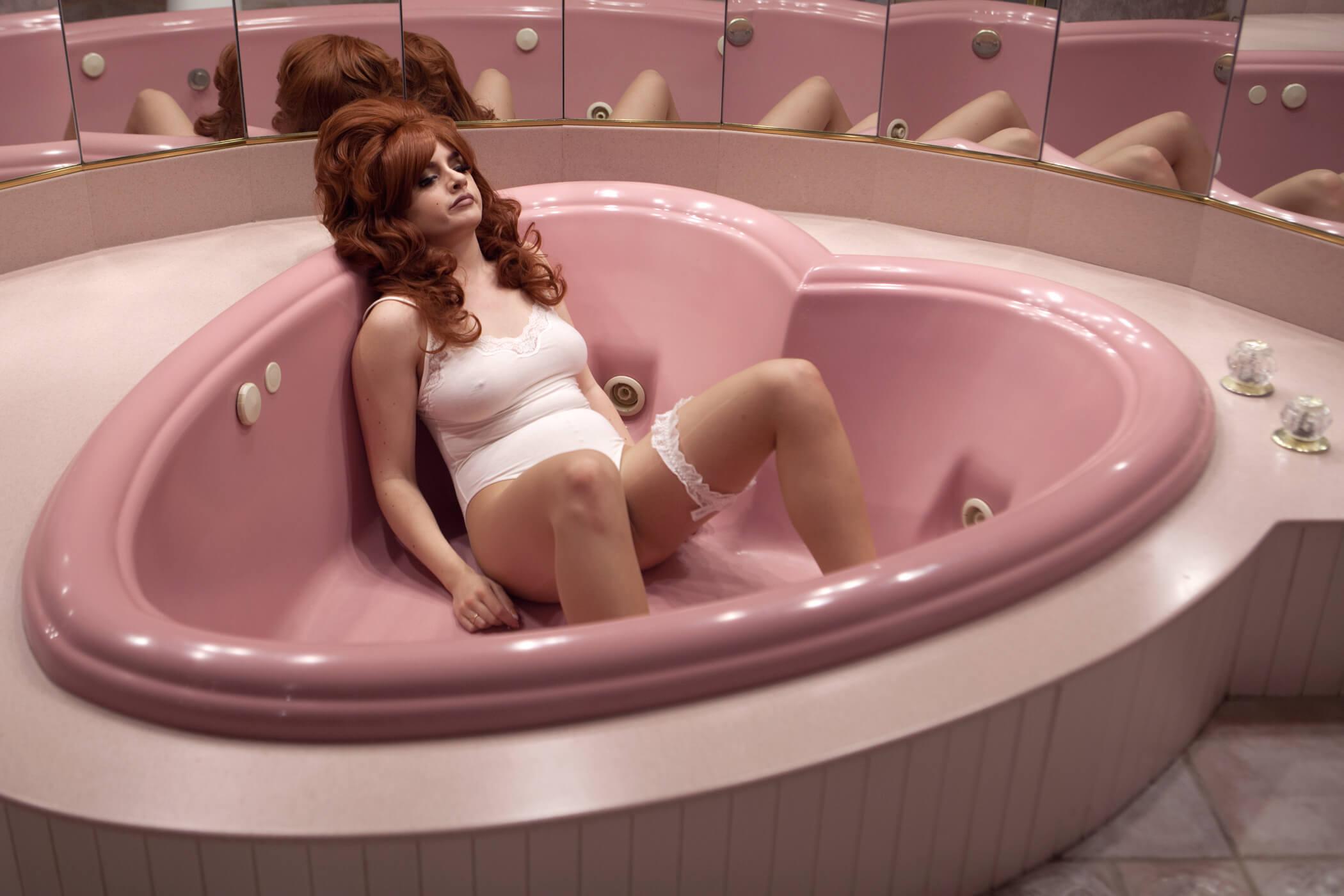
Calypso nos recuerda que el espejo puede ser también una jaula, que la cámara no siempre libera, y que detrás de cada imagen puede esconderse un grito mudo. Joyce, su criatura artificial, es tanto una víctima como una heroína; una figura espectral que nos interpela con su silencio, su belleza plástica, su incomodidad radical.
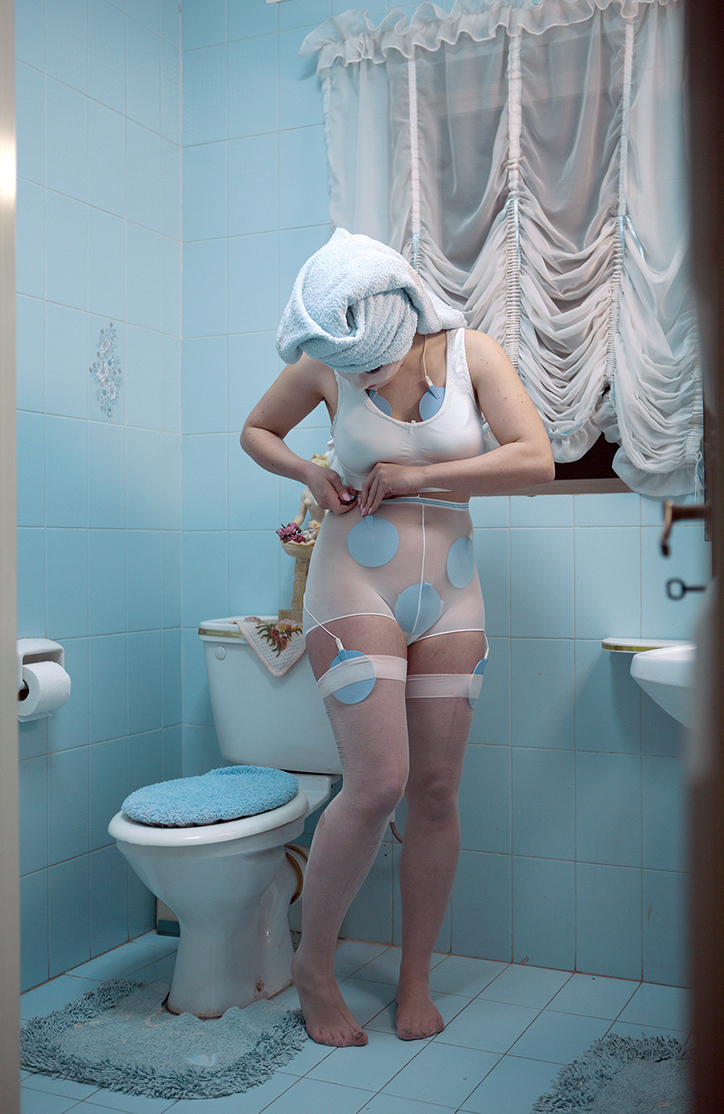
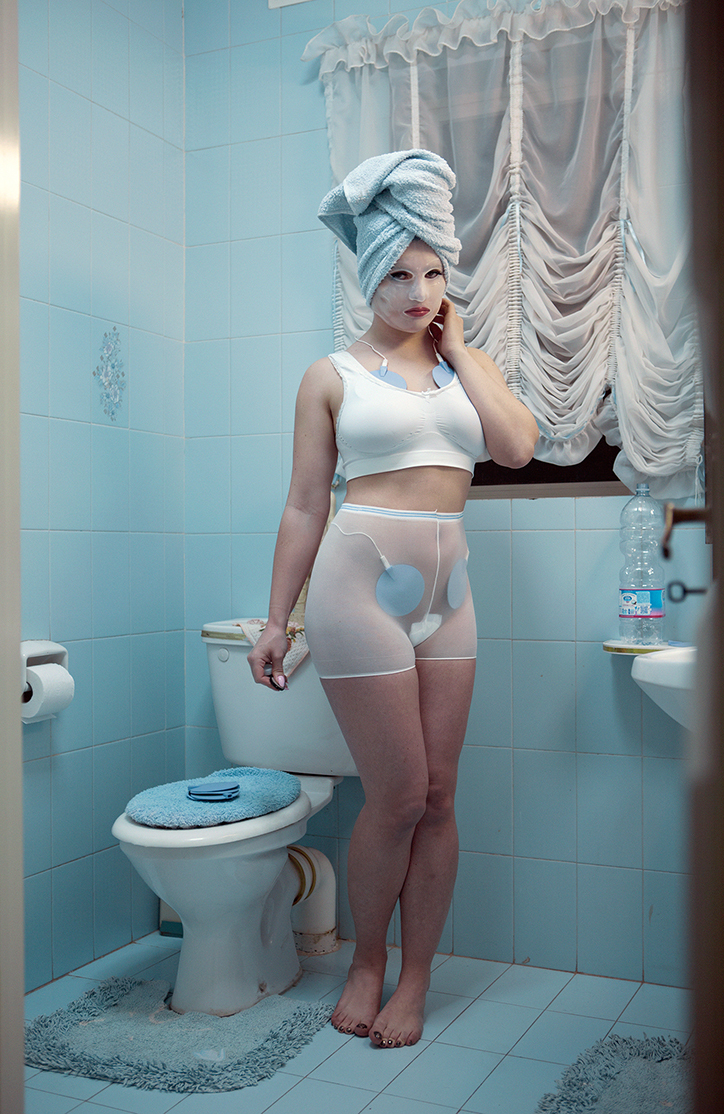
Con cada disparo, Juno Calypso construye no solo una imagen, sino un universo conceptual que nos confronta con nuestras propias máscaras. Y lo hace con la serenidad de quien sabe que reír, a veces, es el primer paso hacia la toma de conciencia.
Juno Calypso y la inquietante estética de lo artificial. Por Mónica Cascanueces.
